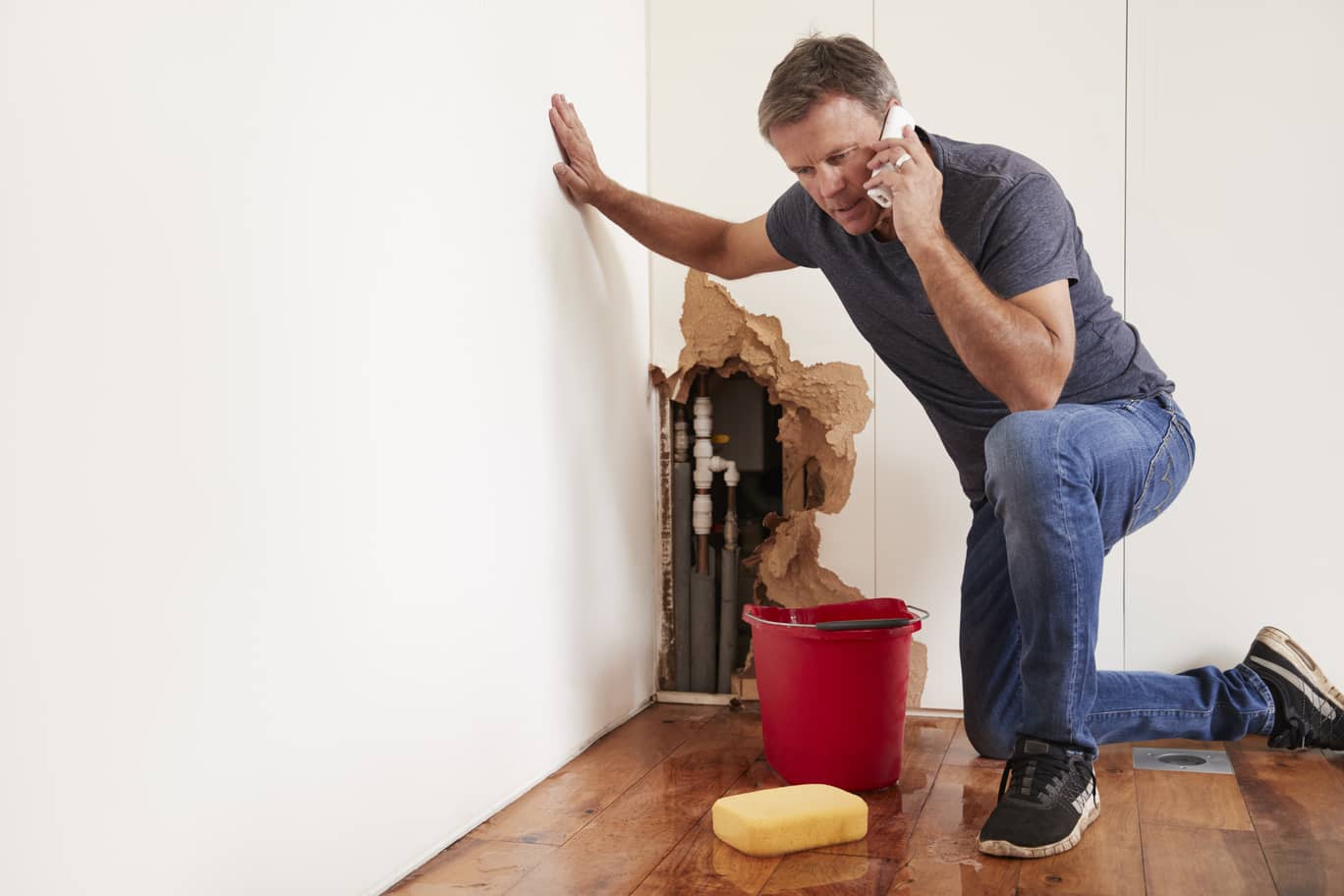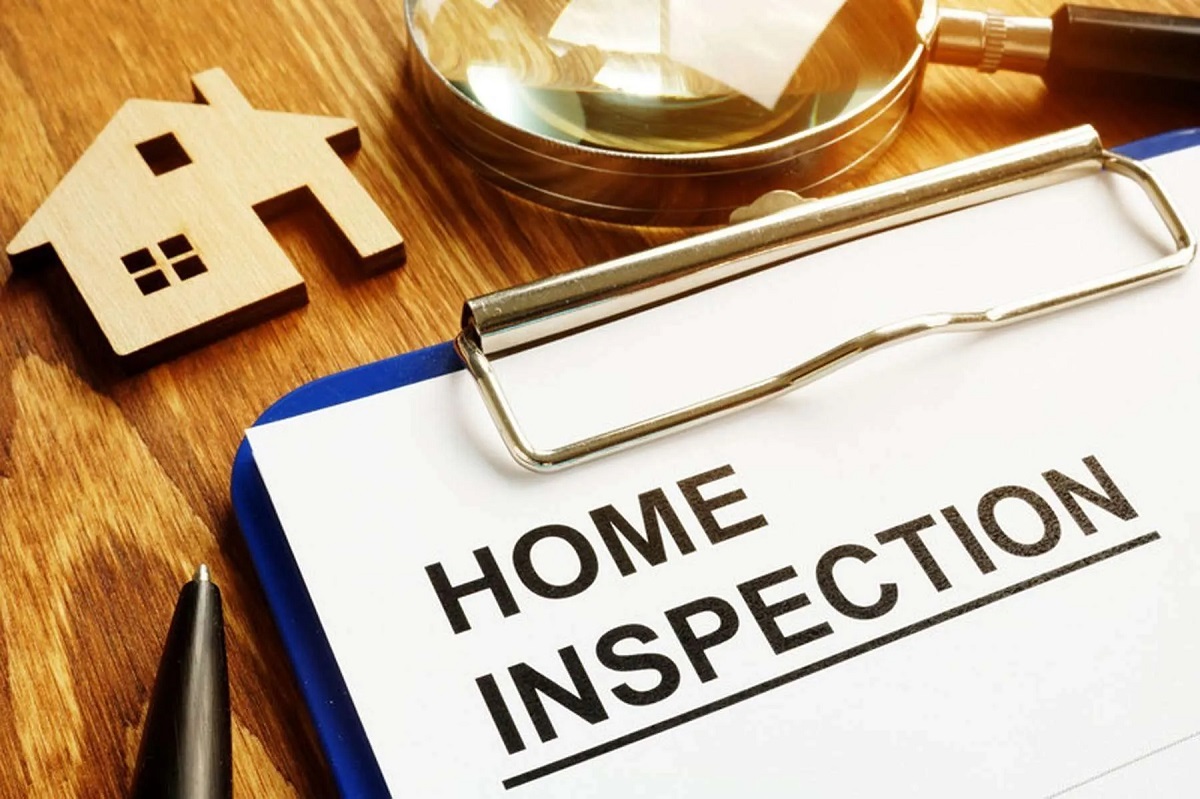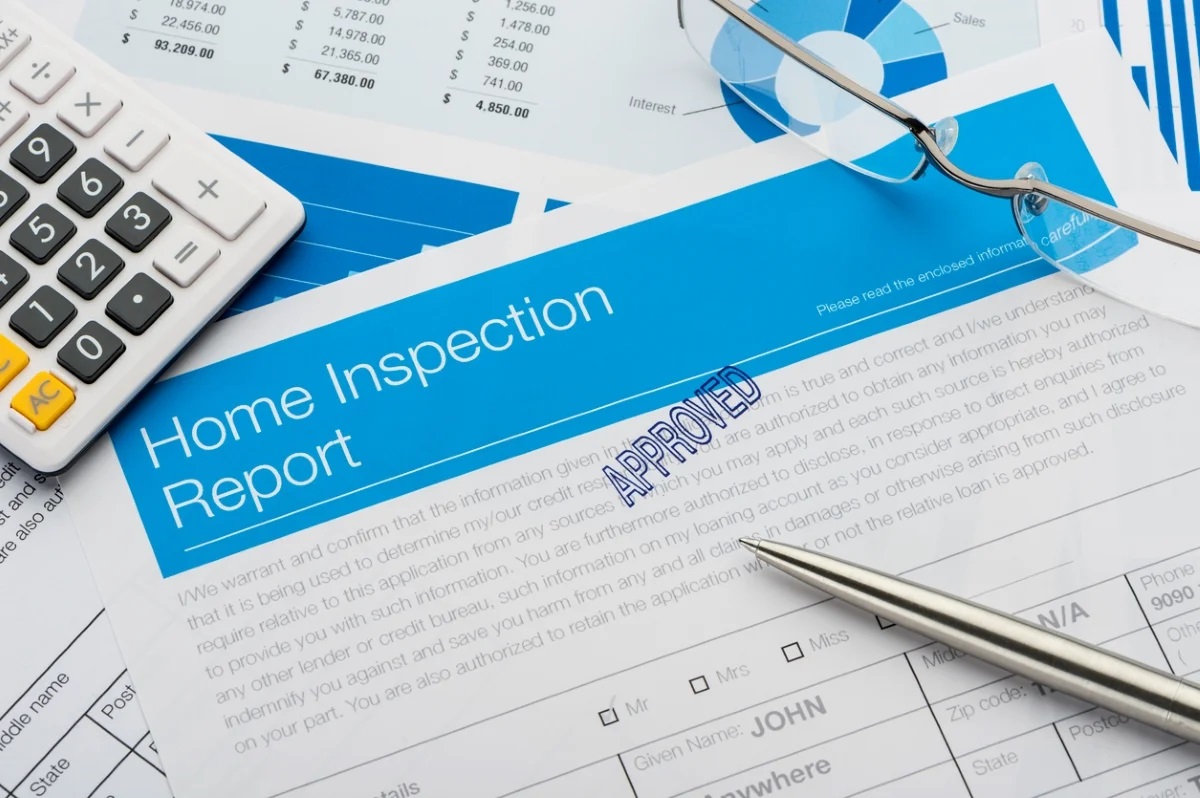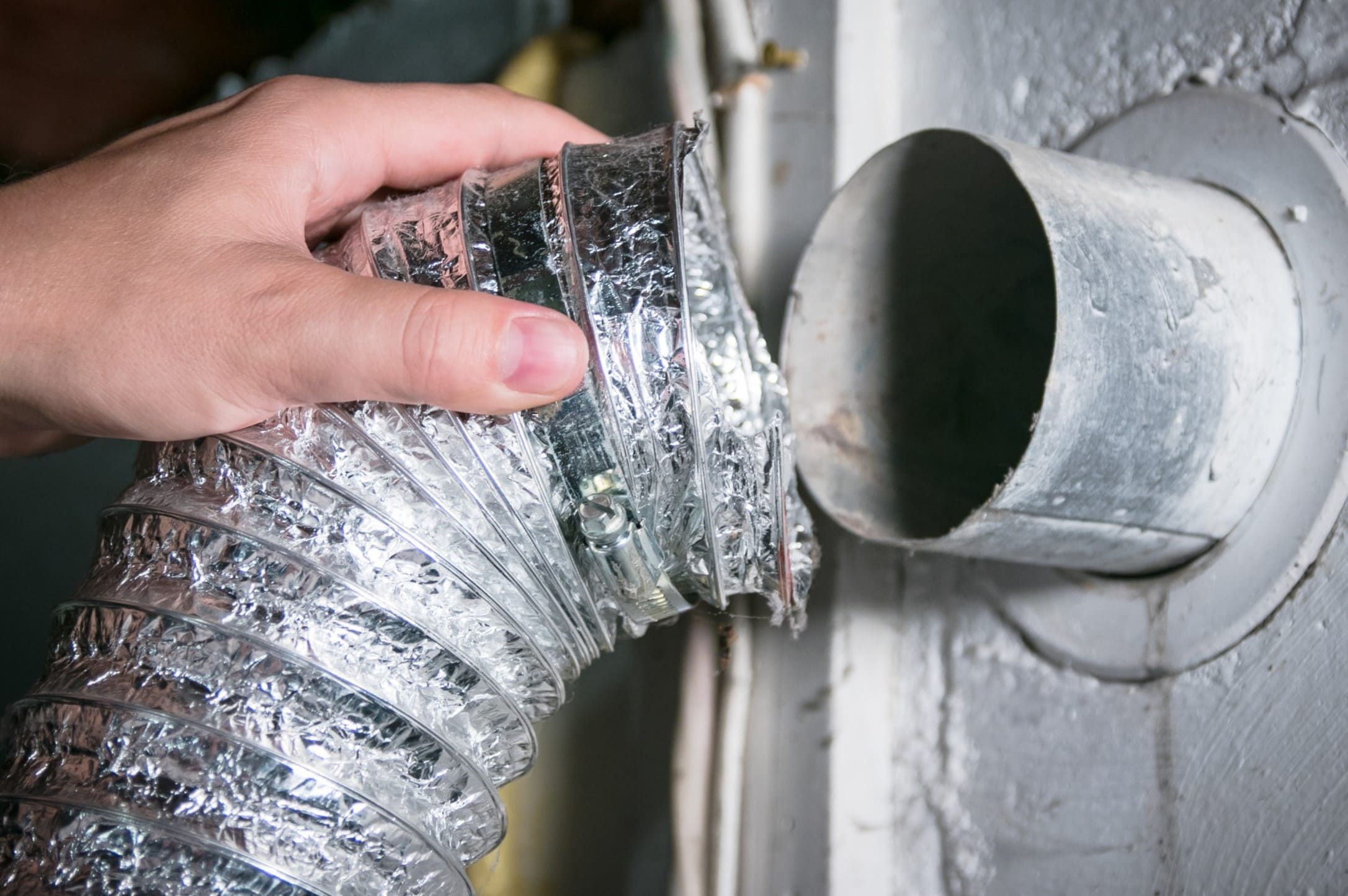Home>Home Maintenance>In California, How Long Can A Buyer File An Action For A Bad Home Inspection?


Home Maintenance
In California, How Long Can A Buyer File An Action For A Bad Home Inspection?
Modified: March 6, 2024
Learn about the time constraints for filing an action for a bad home inspection in California. Discover how long buyers have to take legal action.
(Many of the links in this article redirect to a specific reviewed product. Your purchase of these products through affiliate links helps to generate commission for Storables.com, at no extra cost. Learn more)
Introduction
Welcome to the exciting world of home maintenance! Whether you have just purchased your dream home or you’ve been living in your humble abode for years, taking care of your property is crucial for its longevity and value. Part of this process involves conducting regular inspections to identify any potential issues that may need attention.
In California, home inspections play a vital role in the home-buying process. They provide buyers with valuable information about the condition of the property and can help identify any hidden problems that may exist. However, what happens if the inspection reveals issues that were not disclosed or were misrepresented? What are the time limitations for filing an action against the seller for a bad home inspection? Let’s explore the answers to these questions.
Before we dive into the specifics, it’s important to understand the home inspection process in California. When purchasing a home, the buyer typically has the option to conduct a professional home inspection. This inspection is conducted by a qualified inspector who examines various aspects of the property, including its structure, foundation, electrical systems, plumbing, and more.
During the inspection, the inspector will provide a detailed report outlining any issues or areas of concern. This report serves as a valuable tool for buyers to negotiate repairs or credits from the seller before completing the purchase. If the inspection report reveals serious defects that were not previously disclosed, the buyer may have legal options to pursue.
Key Takeaways:
- Act promptly if you find issues from a home inspection. In California, you generally have 4 years for breach of contract claims and 3 years for negligence claims to take legal action.
- Exceptions to the time limitations may apply, so consult with an attorney. Preserve evidence and seek professional guidance to protect your rights and seek remedies for a bad home inspection.
Understanding the Home Inspection Process in California
The home inspection process in California is a crucial step in the home-buying journey. It provides buyers with important information about the condition of the property they are considering purchasing. Understanding this process is essential for navigating any potential issues that may arise during or after the inspection.
When you decide to purchase a home in California, you have the right to request a home inspection. This inspection is typically conducted by a licensed and certified home inspector who will thoroughly examine the property from top to bottom. The goal of the inspection is to assess the overall condition of the home and identify any potential issues or defects.
The home inspector will carefully inspect various areas of the property, such as the foundation, roof, electrical systems, plumbing, HVAC systems, and more. They will also evaluate the overall functionality and safety of the home. During the inspection, the inspector will take detailed notes and photographs to document any findings.
Once the inspection is complete, the inspector will provide a comprehensive report that outlines their observations, including any defects, safety concerns, or recommended repairs. It’s essential to carefully review this report and discuss any concerns or questions with your real estate agent or attorney.
It’s important to note that a home inspection is different from an appraisal. While an appraisal assesses the value of the property, a home inspection focuses on its condition. The appraisal is typically required by the lender to ensure that the property’s value aligns with the loan amount. The home inspection, on the other hand, is for the buyer’s benefit to have a clear understanding of the property’s condition.
It’s highly recommended that buyers attend the home inspection to get a firsthand look at any issues or concerns. This allows you to ask questions, seek clarifications, and better understand the inspector’s findings. Attending the inspection is also an excellent opportunity to familiarize yourself with the various systems and components of the home.
Time Limitations for Filing an Action for a Bad Home Inspection
When a home inspection reveals significant issues or defects that were not disclosed by the seller, buyers in California may have legal options to pursue. However, it’s important to be aware of the time limitations for filing an action against the seller for a bad home inspection.
In California, the statute of limitations for filing a lawsuit related to a bad home inspection is typically governed by two main factors: breach of contract claims and negligence claims.
For breach of contract claims, the statute of limitations is generally four years from the date the cause of action accrues. In the context of a bad home inspection, the cause of action accrues when the buyer discovers, or reasonably should have discovered, the defect or issue in question. This means that buyers have up to four years from the date of discovering the problem to file a lawsuit against the seller.
On the other hand, for negligence claims, the statute of limitations is generally three years from the date of injury or damage. In the case of a bad home inspection, the injury or damage could be the purchase of a property with undisclosed defects or the cost of repairs needed to address the issues identified in the inspection report. Buyers have up to three years from the date of injury or damage to file a negligence claim against the seller.
It’s worth noting that these time limitations are not set in stone and may vary depending on the circumstances of the case or other applicable laws. It is crucial to consult with a qualified attorney who specializes in real estate law to understand the specific time limitations that apply to your situation.
It’s important to act promptly if you believe you have a valid claim against the seller for a bad home inspection. Waiting too long to take legal action may result in the expiration of the statute of limitations, preventing you from pursuing your case in court.
Additionally, it’s essential to preserve any evidence related to the bad home inspection, such as the inspection report, photographs, correspondence with the seller, and any repair estimates or invoices. These documents will play a crucial role in supporting your claim and establishing the extent of the damages you have incurred.
Consulting with a knowledgeable attorney will help you navigate the legal process and ensure that you meet all the necessary requirements and deadlines for filing a lawsuit. They will guide you through the steps involved and help determine the best course of action based on the specifics of your case.
Statute of Limitations for Breach of Contract Claims
When it comes to filing an action for a bad home inspection based on breach of contract, it’s important to understand the statute of limitations that governs these claims in California. The statute of limitations sets a specific time frame within which a lawsuit must be filed after the cause of action arises.
In California, breach of contract claims related to a bad home inspection generally have a statute of limitations of four years. This means that the buyer has up to four years from the date the cause of action accrues to file a lawsuit against the seller for breaching the terms of the contract.
The cause of action in the context of a bad home inspection typically accrues when the buyer discovers, or reasonably should have discovered, the defect or issue that was not disclosed or misrepresented by the seller. It’s essential to note that the discovery of the issue may not necessarily coincide with the date of the home inspection itself. It may take some time for the buyer to become aware of the problem.
It’s important to act promptly and not wait until the statute of limitations expires to file a breach of contract claim. If the four-year time limit has passed, the buyer may lose the right to pursue legal action against the seller and seek compensation for damages resulting from the bad home inspection.
It’s crucial to document all relevant evidence and preserve any correspondence or agreements relating to the home inspection and the purchase of the property. This includes the inspection report, any communication with the seller regarding the disclosure of defects, repair requests, and any other relevant documentation. These records will be invaluable in supporting your breach of contract claim and demonstrating the seller’s failure to meet their obligations under the contract.
Consulting with an experienced attorney who specializes in real estate law is highly recommended when filing a breach of contract claim for a bad home inspection. They will guide you through the legal process, help evaluate the strength of your claim, and ensure that all necessary filings and documentation are completed correctly and within the required timeframe.
Remember, the statute of limitations for breach of contract claims is four years, but it’s essential to consult with an attorney to fully understand your rights and the specific deadlines that may apply to your particular situation.
In California, a buyer generally has 3 years to file a lawsuit for a bad home inspection. It’s important to act within this time frame to protect your rights.
Statute of Limitations for Negligence Claims
When pursuing a claim for a bad home inspection based on negligence in California, it is crucial to understand the statute of limitations that applies to these claims. The statute of limitations sets a specific time frame within which a lawsuit must be filed after the cause of action arises.
In California, the statute of limitations for negligence claims related to a bad home inspection is generally three years. This means that the buyer has up to three years from the date of injury or damage to file a lawsuit against the seller for negligence.
In the context of a bad home inspection, the injury or damage may refer to purchasing a property with undisclosed defects or incurring repair costs due to issues that were not revealed in the inspection report. It’s important to note that the date of injury or damage may not necessarily align with the date of the home inspection itself. It may take some time for the buyer to discover the extent of the defects or the need for repairs.
Waiting too long to file a negligence claim can have serious consequences. If the three-year statute of limitations expires before the lawsuit is initiated, the buyer may lose their right to seek compensation for damages resulting from the bad home inspection based on negligence.
When pursuing a negligence claim, it’s crucial to gather and preserve all relevant evidence. This includes the home inspection report, any subsequent communication with the seller regarding defects, invoices and receipts for repairs, and any other documentation that supports the claim. This evidence will play a vital role in establishing the extent of the damages and demonstrating the seller’s negligence.
Consulting with a knowledgeable attorney who specializes in real estate law is highly recommended when pursuing a negligence claim for a bad home inspection. An attorney will help navigate the legal process, assess the strength of the claim, and ensure that all necessary filings and documentation are completed correctly and within the required timeframe.
Remember, the statute of limitations for negligence claims is three years, but it’s important to consult with an attorney to fully understand the specific deadlines and requirements that may apply to your particular case. Acting promptly and obtaining legal guidance will increase the likelihood of a successful claim for damages resulting from a bad home inspection based on negligence.
Tolling of the Statute of Limitations
When it comes to filing an action for a bad home inspection, it’s essential to understand that the statute of limitations may be subject to certain exceptions and tolling provisions in California. Tolling refers to the suspension or temporary stopping of the statute of limitations period, allowing for additional time to file a lawsuit.
While the specific circumstances and grounds for tolling may vary, there are a few common scenarios where the statute of limitations may be tolled in relation to a bad home inspection:
Fraudulent concealment: If the seller deliberately conceals or fails to disclose material defects during the home inspection, the statute of limitations may be tolled. This means that the clock on the limitations period would not start ticking until the buyer discovers, or reasonably should have discovered, the concealed defects.
Fraudulent misrepresentation: If the seller provides false information or makes misleading statements about the condition of the property during the home inspection, the statute of limitations may be tolled. Similar to fraudulent concealment, the limitations period would not begin until the buyer becomes aware, or reasonably should have become aware, of the misrepresentation.
Mental incapacity: If the buyer suffers from a mental incapacity that prevents them from understanding their legal rights or pursuing a claim, the statute of limitations may be tolled until the incapacity is removed.
Minority: If the buyer is a minor at the time of the bad home inspection, the statute of limitations may be tolled until they reach the age of majority. This allows minors additional time to file a claim without being bound by the usual limitations period.
Bankruptcy: In some cases, if either the buyer or seller files for bankruptcy, the statute of limitations may be tolled until the bankruptcy proceedings are resolved. This pause in the limitations period allows the parties to focus on the bankruptcy process before pursuing any legal action related to the bad home inspection.
It’s important to note that tolling of the statute of limitations can be complex, and the specific circumstances of each case may differ. Consulting with an experienced attorney who specializes in real estate law is highly recommended to understand the applicability of tolling provisions to your specific situation.
By understanding tolling provisions and potential exceptions to the statute of limitations, you can ensure that you are aware of all available legal options and can take timely action to protect your rights in case of a bad home inspection.
Exceptions to the Statute of Limitations
While the statute of limitations sets a time limit for filing a lawsuit related to a bad home inspection, there are certain exceptions that may extend or override these limitations in California. These exceptions provide opportunities for buyers to pursue legal action even if the typical limitations period has expired. It’s important to be aware of these exceptions when considering a claim for a bad home inspection.
One common exception to the statute of limitations is the “discovery rule.” Under this rule, the limitations period begins when the buyer discovers, or should have reasonably discovered, the defect or issue that gives rise to the claim. This means that the clock on the limitations period starts ticking from the date of discovery, rather than the date of the home inspection or the injury.
The discovery rule is particularly relevant in cases where defects are not immediately apparent or when the buyer only becomes aware of the issue after the limitations period has expired. If the buyer can demonstrate that they took reasonable steps to investigate the property and were genuinely unaware of the defect until a later date, they may still have grounds to file a lawsuit even after the typical limitations period has elapsed.
Another exception to the statute of limitations is the “continuous accrual” rule. This rule applies when the defect or issue is ongoing and continues to cause harm or damage over time. In these cases, each new instance of harm or damage can be considered a separate cause of action, and the limitations period begins anew. This allows buyers to pursue legal action for ongoing or progressive issues associated with a bad home inspection, regardless of when the initial discovery took place.
Additionally, there may be exceptions to the statute of limitations based on specific contractual provisions. Some contracts may include clauses that extend or shorten the limitations period, known as “contractual limitations periods.” It’s important to carefully review the terms of the contract and consult with an attorney to understand any contractual exceptions that may apply to your situation.
Each case is unique, and the applicability of these exceptions will depend on the specific circumstances and laws that govern the situation. It is crucial to consult with an experienced attorney who specializes in real estate law to determine whether any exceptions to the statute of limitations apply to your case.
Understanding these exceptions is essential for buyers seeking recourse for a bad home inspection. By familiarizing themselves with the discovery rule, continuous accrual rule, and contractual limitations, buyers can make informed decisions about pursuing legal action even if the typical limitations period may have expired.
Conclusion
When it comes to dealing with a bad home inspection in California, understanding the time limitations for filing an action is crucial. Knowing the statute of limitations for breach of contract claims and negligence claims is essential for protecting your rights as a buyer and seeking potential remedies for any undisclosed or misrepresented defects.
Buyers should be aware that the statute of limitations for breach of contract claims is typically four years from the date the cause of action accrues. For negligence claims, the statute of limitations is generally three years from the date of injury or damage. Acting promptly and consulting with an experienced attorney who specializes in real estate law is imperative to ensure compliance with these limitations.
It’s important to note that there may be exceptions to the statute of limitations that could toll or extend the time period for filing a lawsuit. These exceptions may include fraudulent concealment, fraudulent misrepresentation, mental incapacity, minority status, or bankruptcy. Understanding these exceptions and their potential applicability is crucial for buyers seeking legal remedies for a bad home inspection that may have gone unnoticed or undisclosed for an extended period.
Preserving evidence, such as the home inspection report, repair estimates, and correspondence with the seller, is vital in supporting your claims and establishing the extent of damages incurred. Consulting with an attorney will help navigate the legal process, assess the strength of your claim, and ensure that all necessary filings and documentation are handled correctly and within the required timeframe.
Remember, the process of addressing a bad home inspection can be complex, but with the right knowledge and professional guidance, you can protect your rights and seek appropriate remedies. Taking timely action, understanding the time limitations, and working with experienced professionals will help you navigate the legal landscape and ensure a fair resolution.
In the end, your home is likely one of the biggest investments you will make in your lifetime. Taking the necessary steps to address a bad home inspection ensures that you can enjoy a safe and well-maintained property for years to come.
Frequently Asked Questions about In California, How Long Can A Buyer File An Action For A Bad Home Inspection?
Was this page helpful?
At Storables.com, we guarantee accurate and reliable information. Our content, validated by Expert Board Contributors, is crafted following stringent Editorial Policies. We're committed to providing you with well-researched, expert-backed insights for all your informational needs.















0 thoughts on “In California, How Long Can A Buyer File An Action For A Bad Home Inspection?”